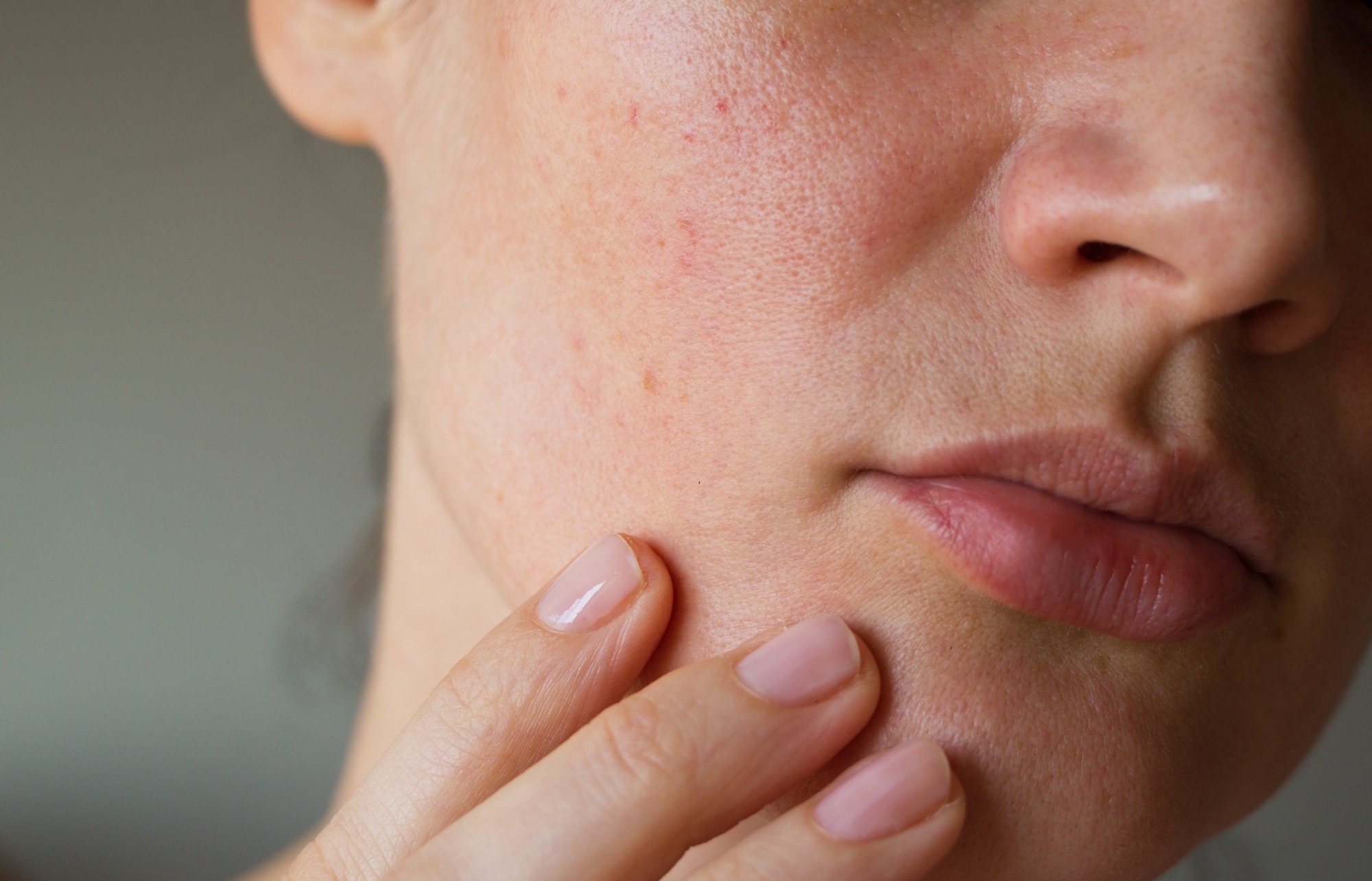In a recent study published in Scientific Reports, researchers investigated the volatile organic compounds (VOCs) generated by the skin in response to psychological stress.
 Study: Effects of psychological stress on the emission of volatile organic compounds from the skin. Image Credit: Geinz Angelina/Shutterstock.com
Study: Effects of psychological stress on the emission of volatile organic compounds from the skin. Image Credit: Geinz Angelina/Shutterstock.com
Background
The volatilome is a collection of volatile organic compounds (VOCs) generated by plants, microbes, or animals that contribute to the skin's olfactory profile and constitute part of the odor print.
The human volatilome contains thousands of VOCs released by various sources, including exhaled breath, saliva, blood, urine, milk, feces, and skin emissions.
These VOCs are not only associated with clinical conditions; they can also be exogenous, resulting from environmental exposure or product usage. Eccrine, sebaceous, and apocrine glands generate most endogenous skin volatiles in conjunction with naturally present microorganisms.
Psychological stress can disrupt the skin barrier and modify inflammatory responses of the skin, although its effect on VOC emission from human skin is unclear.
About the study
In the present study, researchers examined the effects of stress on VOC emissions from the skin.
The primary goal was to investigate volatile organic compounds secreted by forehead skin following stress induction among middle-aged women by performing cognitive tasks such as problem-solving and word scrambling to identify VOC stress markers.
The secondary purpose was to examine the impact of skin sebum concentration, pH, and transepidermal water loss (TEWL) on VOC release.
The research was comprised of 35 nonsmoking women aged 24 to 40 (mean age 35). The researchers sampled VOCs from the forehead prior to and post-stress induction with a silicon polymer. They evaluated the sample device linearity using four VOCs: heptanal, 2-phenylethanol, isoamyl acetate, and 2,3-dimethylpyrazine.
Three measurements were taken concurrently inside the calibration curve's linearity domain, using a reference solution of 15 ng/µL to evaluate technique repeatability.
The team induced cognitive stress through timed exercises utilizing customized software, including a clock for semantic and arithmetic tasks, and confirmed using physiological and clinical data.
They assessed stress levels using a State-Trait Anxiety Inventory (STAI) questionnaire, verbal expression analysis, and clinical assessments.
The researchers identified and quantified VOCs using gas chromatography-mass spectrometry (GC-MS). Stress induction was substantiated by a substantial rise in state anxiety as measured by the questionnaire, changes in electrodermal activity (EDA) measures, and verbatim stress expressions.
The researchers also assessed sebum production and skin pH. They analyzed the data qualitatively and quantitatively to determine VOC expression before and after the psychological stress tests.
The RSD was determined for every volatile chemical using the average relative abundance values for two to three predominant ions.
To examine the durability of adsorbed VOCs on the silicon polymer, the researchers performed assessments on day 3.0 and day 12 following the sample phase, simulating the delay between invoicing and GC-MS assessment.
They derived three parameters from the EDA signals collected throughout the adaptation and stress induction phases. The first parameter was the average SCL (µS). The second parameter was the frequency (peaks/min), while the third was the average amplitude (µS) of the NS-SCRs.
Results
The study found 198 VOCs with a higher concentration of straight-chain alkanes, alcohols, esters, cyclic alkanes, nitrogen compounds, and ketones. Among the chemicals, 69 originated from cosmetic components, 49 from food, 37 from human or microbial metabolisms, and 33 from the environment.
Three VOCs (2-hydroxyethyl acetate, 3-methylpentadecane, and 2-hydroxyethyl propanoate) were associated with stress induction, and 14 compounds were statistically significant.
The VOCs were primarily from the alkane family, with fatty acyls produced from lipids and ethylbenzenes being the most common. In addition, the researchers characterized a nitrogen molecule (N, N-dibutylformamide).
The least represented molecule was detected at 3.6 ng/µL (2-hydroxyethyl propanoate), while the most prevalent were geranyl acetone and butylated hydroxytoluene at concentrations of 121 ng/µL and 177 ng/µL, respectively.
The average abundance of primary ions in volatile standards increased dramatically during storage, with RSD values ranging from 1.3 to 3.1% on day 0 and 9.9% on day 3.
The trait-anxiety scores and state-anxiety levels rose significantly by 7.90% and 34%, respectively, between the no-stress and stress periods.
During the stress phase, all three EDA measures rose. SCL increased from 0.5 to 1.9 µS, and NS-SCRs increased to 4.0 from 0.04 peaks per minute. 71% of participants' verbatims included deception/failure, stress/pressure, and difficulty/complicated.
After stress induction, the sebum level on the foreheads increased by 37%, while the skin pH dropped by 14%.
Conclusion
Overall, the study findings highlighted the impact of psychological stress on the modulation of cutaneous VOC emission. The relative measurement of these chemicals demonstrated a production range throughout the stress period.
They are components of lipid metabolism, oxidative stress, air pollution, and cosmetic applications. Some were previously known as disease biomarkers, but only one is stress-related. Future studies could examine the possible impact of modulating these VOC expressions on skin physiology.
Another approach to this research may be to investigate their influence on human communication by understanding chemosignaling.